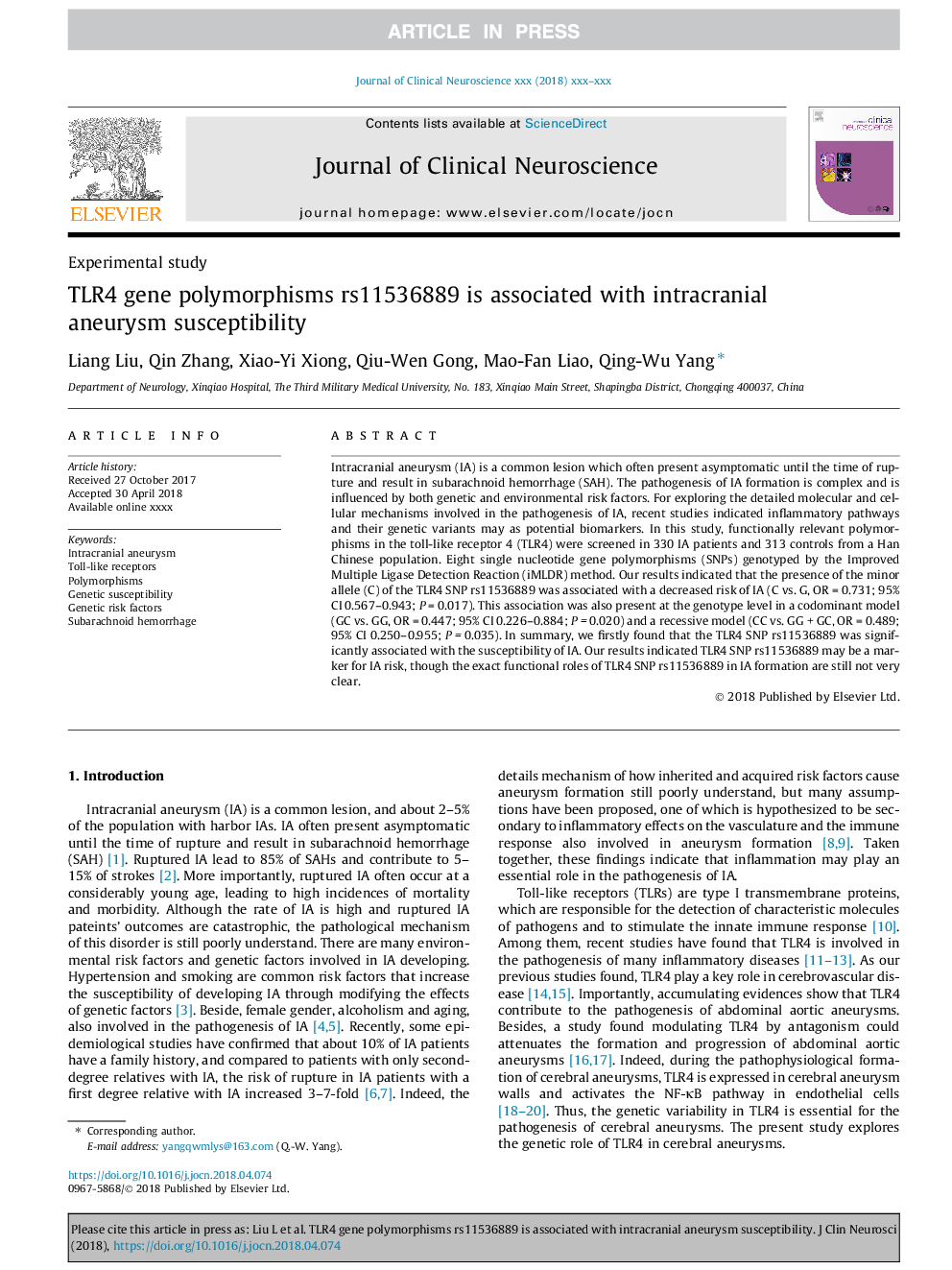| Article ID | Journal | Published Year | Pages | File Type |
|---|---|---|---|---|
| 8685042 | Journal of Clinical Neuroscience | 2018 | 6 Pages |
Abstract
Intracranial aneurysm (IA) is a common lesion which often present asymptomatic until the time of rupture and result in subarachnoid hemorrhage (SAH). The pathogenesis of IA formation is complex and is influenced by both genetic and environmental risk factors. For exploring the detailed molecular and cellular mechanisms involved in the pathogenesis of IA, recent studies indicated inflammatory pathways and their genetic variants may as potential biomarkers. In this study, functionally relevant polymorphisms in the toll-like receptor 4 (TLR4) were screened in 330 IA patients and 313 controls from a Han Chinese population. Eight single nucleotide gene polymorphisms (SNPs) genotyped by the Improved Multiple Ligase Detection Reaction (iMLDR) method. Our results indicated that the presence of the minor allele (C) of the TLR4 SNP rs11536889 was associated with a decreased risk of IA (C vs. G, ORâ¯=â¯0.731; 95% CI 0.567-0.943; Pâ¯=â¯0.017). This association was also present at the genotype level in a codominant model (GC vs. GG, ORâ¯=â¯0.447; 95% CI 0.226-0.884; Pâ¯=â¯0.020) and a recessive model (CC vs. GGâ¯+â¯GC, ORâ¯=â¯0.489; 95% CI 0.250-0.955; Pâ¯=â¯0.035). In summary, we firstly found that the TLR4 SNP rs11536889 was significantly associated with the susceptibility of IA. Our results indicated TLR4 SNP rs11536889 may be a marker for IA risk, though the exact functional roles of TLR4 SNP rs11536889 in IA formation are still not very clear.
Keywords
Related Topics
Life Sciences
Neuroscience
Neurology
Authors
Liang Liu, Qin Zhang, Xiao-Yi Xiong, Qiu-Wen Gong, Mao-Fan Liao, Qing-Wu Yang,
